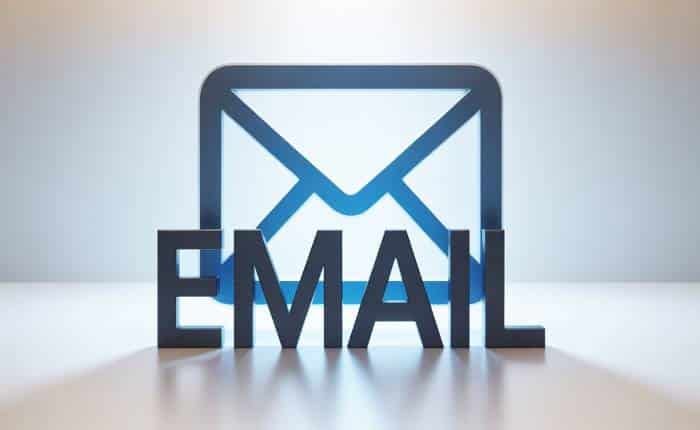How to Turn Email Analytics into a Smarter Content Strategy

Email analytics are more than numbers, these important discoveries shift the content strategy of how brands communicate with their subscription audience. Utilizing email analytics not only transforms a standard email campaign into something greater but it transforms an email strategy into a holistic, purposeful endeavor all based on a previously documented pattern of audience response. With such levels of engagement at their fingertips, marketers can craft more and more relevant, precise content to further entice readers for stronger loyalty, engagement and ultimately, conversion. This is how to leverage email analytics for a more effective content strategy.
How Email Analytics Informs Content Strategy
Email analytics teach marketers about subscriber engagement, interest, and preference. Storyblok and Nuxt can be combined to help deliver and optimize personalized email content by integrating dynamic content generation with responsive front-end rendering. Open rates, click rates, conversions, and subscriber engagement metrics offer great feedback on performance, and those marketers who understand these sentiments will be able to better adjust messaging, content appropriateness, and reliable email offerings that cater more to subscriber desire. Through assessing this information over time, marketers can learn enough to create a compelling and relevant content strategy that aligns with ever-present subscriber desire.
How Click-Through Rates Help Marketers Learn What Subscribers Want
Clicks are some of the best indicators of interest as they literally tell marketers what captures the attention of potentially engaged readers. By assessing over time which links get clicked or which stories, topics, or sections of the newsletter receive the most attention, marketers begin to learn what subscribers want from their content and what additional content may help them down the line. Analysis of click-through focus over time can guide future newsletters and content opportunities to ensure ongoing engagement with interesting, relevant information.
How Email Analytics Can Help Adjust Send Frequency Based on Subscriber Response
Knowing how frequently to send emails is a process, but email analytics can help guide marketers to make the right decision. Subscriber response will show how engaged frequency levels have occurred over time, hopefully well below unengaged low. If a marketer finds a large number of subscribers not engaged with an emailed topic after emailing it consecutively many times and/or finding many unsubscribing at an alarming rate, they may realize that they’re sending too many emails. Conversely, if email performance is endearing subscribers and achieving click engagement at high rates, then their frequency level is probably on point with minor adjustments based on other analytics. Regular assessment here will build engagement without overwhelming subscribers.
Using Conversion Rates to Optimize Calls to Action
Conversion rates tell an email marketer which calls to action (CTA) work best in the email campaign and what gets a subscriber to act, precisely. After assessing which CTA garnered the most conversions, for example, it can be adjusted to be better worded, better positioned, or even colors that entice can be determined through detailed data analysis. Once this information is solidified, adjustments are made so that every future email will guide subscribers in the right direction for optimum conversion. When every email uses the right CTA, campaign success and ROI can increase significantly.
Using Customer Behavior Trends to Create Unique Content
One of the biggest parts of personalization in successful email marketing comes from analytics. An even more engaged subscriber, however, is reliant on personalized content via analytics. This means paying attention to customer behavior trends and using that information to create uniquely hyper-relevant content. For instance, if someone looks at a particular product or type of product frequently yet hasn’t purchased it yet, creating an email that acknowledges those actions provides a better experience than sending generic information about something else. When people get what they want when they need it, even the most basic of emails becomes special to them.
Using Analytics to Enhance Subject Lines and Preheaders
One of the most critical elements in open rates and initial intrigue is subject lines and preheaders. Therefore, using metrics to gauge their success is relatively simple as it’s all based upon analytics. In fact, key performance indicators provide this information over time as open rates and engagement depend upon what persuaded people to open the email in the first place. By assessing which subject lines reign supreme over time, marketers gain the information they need to see which types of words or phrases work best for people. This allows them to adjust future subject lines and preheaders accordingly to be visually appealing and compelling.
Improving Email Formatting and Style Based on Engagement Analytics
Emails are read and used based on formatting and styles that improve or inhibit readability and subscriber engagement. Through analytics, it’s clear how engaged subscribers are with specific styles, graphics, or topics. If a style is associated with a lot of engagement, that means it was readable or actionable. If styles have little engagement associated with them, then it’s clear that something needs to be changed or eliminated moving forward. Learning and adjusting from consistent analytics ensure reliability of clear and proper aesthetic experiences for subscribers.
Learning How Subscribers Access Email from Device and Platform Analytics
Subscribers access email on all different devices. Through analytics, it’s easy to decipher which devices and which platforms garner the most or least engagement attempts. On a micro-level, this can determine device-specific preferences or performance-based tendencies based on certain engagement. This allows marketers to adjust their content strategic methods to better accommodate what certain devices are doing and how. Over time, this reflects a reliable methodology that works for subscribers’ access points every time.
Evaluating Engagement Analytics Related to Content Format to Determine Future Formats
The format in which email content is provided can determine how engaged a subscriber is and how much action they’ll take. Email analytics reveal what format works best whether articles, videos, infographics, or email content. Taking the time to review engagement regularly reveals what’s best for your specific subscriber to inform what’s best for future formatting. Knowing this and applying the information constantly helps marketers provide content in forms that subscribers like to engage with the best.
Identifying Opportunities Through Subscriber Feedback
Subscriber feedback in the form of replies or surveys embedded within the email provides qualitative measurement on top of quantitative analytics. Measuring feedback from email subscribers allows marketers to understand deeper reader intentions, pains, and what information they’re looking for beyond open rates and click-throughs. Therefore, qualitative findings alongside quantitative measurements through analytics tools paint a fuller picture of what readers intend. Analogizing with this all-knowing information transforms a guess-based approach to content creation into one based on historical precedent. In addition, relying on this feedback regularly makes content more relevant because it can be adjusted based on real-time truths instead of long-held assumptions about what people want versus what is actually warranted.
Utilizing A/B Testing Results for Content Optimization
A/B testing becomes all the more satisfying with the pair of analytics tools. A/B testing determines whether specific subject lines resonate more than others or whether certain layouts/photos/formats do based on performance. Analysis of these results with accuracy allows marketers to discover what works faster than trial and error. Furthermore, what is discovered can become baseline rules for content creation moving forward, with incremental changes always possible as further testing reveals new findings. Thus, A/B testing with analytics serves as a clear path forward for future adjustments to content which can always be adjusted for the better based on keen analysis.
Setting and Adjusting Content Benchmarks Strategically
Using analytics to create and re-create benchmarks is a guaranteed way to ensure that progress is made. Analytics provide definitive timestamps and demographic-specific reviewed adjustments that allow marketers to clear their heads of prospects and focus on what they know is possible but also challenging. Once established, these benchmarks can also be revisited over time via assessment of analytics to fine-tune engagement rates and effectiveness to something even more achievable based on historical performance. This assessment over time allows for sustenance of what’s better than average performance for email and what’s better than above average but only when relative benchmarks can be established, assessed, and revised over
Using Email Analytics in Greater Content Strategy
Utilizing insights gained from email analytics in a more comprehensive marketing and content strategy allows for continuity across channels and a consistent message. For example, if email campaigns generate data-driven ideas that change or enhance content on your website, articles, social media, or even paid ads, you maintain a similar experience for your brand. When similar analytics are applied across the board, subscribers find the same essential and relevant information whether they access it through an email or find your articles online, thus boosting brand unity, subscription loyalty, and engagement efforts across the myriad of marketing opportunities.
Understand the Subscriber Lifecycle Better Through Analytics
Email analytics allow marketers to better understand subscriber engagement at every stage of the subscriber lifecycle, namely onboarding, engaged subscribers, retention efforts, and even reactivation. By evaluating how email performance varies at certain points along the way, marketers can see how successful (or unsuccessful) their content might be at these pivotal points. With this tactical data gained through email analytics, brands can develop more successful content at pivotal points to better serve their canvassing efforts with crucial information that’s well-timed and effective.
Action Subscription Behavior Based on Seasonal Trends
One of the unfortunate yet notable facets about subscription behavior is that it changes with seasons, holidays, events, and even trending over time in the marketplace. Yet using email analytics makes it simpler for marketers to see these changes over time. They can evaluate whether certain successful emails or specific trending topics brought about higher engagement and earned new subscribers but then dropped off after a holiday, developing seasonal patterns over time, and content can be adjusted accordingly. By recognizing seasonal deviations through behavioral analytics and successfully adjusting timelines, marketers can ensure consistent relevance, timeliness, and subscription appeal. Taking into consideration this data on a recurring timeline shows how marketers can successfully change content with proper availability and continuing timeliness matched consistently with forecasted acquisition efforts.
Understand If Subscribers Are Loyal Using Email Analytics
Email analytics also help marketing teams understand whether subscribers are loyal or if something is off-putting about the content that makes people unsubscribe. By consistently monitoring retention metrics how long people stay engaged with the email credits, how long they remain subscribed post-initial sign-up, how many people engage with the content yet ultimately unsubscribe marketers are better able to assess what works and what doesn’t. This knowledge aids in crafting more targeted strategies down the line with efforts focused toward quality improvements that can support long-term relationships and retention efforts overall. Tracking this information consistently supports long-term satisfaction but also boosts lifetime subscriber value.
Conclusion: Driving Continuous Improvement Through Email Analytics
Email analytics promotes effective email marketing but also turns standard email marketing campaigns into intelligent efforts via content-driven emails and strategically planned business developments that enhance total marketing effectiveness on the back end. Since they focus on what works from every successful conversion, marketing no longer needs to rely on big picture trends for small picture ideas or guess what’s best for audiences. Instead, they have the potential to be even better marketers for their subscribers by learning exactly what they want, what they expect, and how they engage with email content after being inundated with such targeted and compartmentalized information for so long. This intimate knowledge allows for hyper-personal business decisions that lead to truly effective content strategies going forward.
For example, over time, what’s effective allows them to change what content exists in the first place. Marketing analytics show how often things are read, where audience engagement peaks and valleys lie, and thus, identifying what’s the most interesting or boring and elevating them or dropping them makes ultimate sense. In addition to what’s read the most, another metric marketers discover through analytics is how effective certain visuals and presentations are. Thus, using this information to quell video integration or overly busy graphics with too much text allows marketers to better balance what types of imagery/textual representations work and engagement levels for a more effective end product.
Ultimately, using email analytics systematically creates an environment of improvement that serves the effort well on a consistent basis. It’s not enough to see what’s working at one given point in time using email analytics promotes adjustments down the line as well. Creating an email strategy about what’s been successful in the past keeps relevance of factual information over time not just what works in the present and this keeps subscribers longer loyal, investing more in lifetime value of contact than if they were hit-or-miss with anticipated developments. Ultimately, using email analytics constantly turns decent into extraordinary actions that assess the results in the moment without fail with future use considered.




